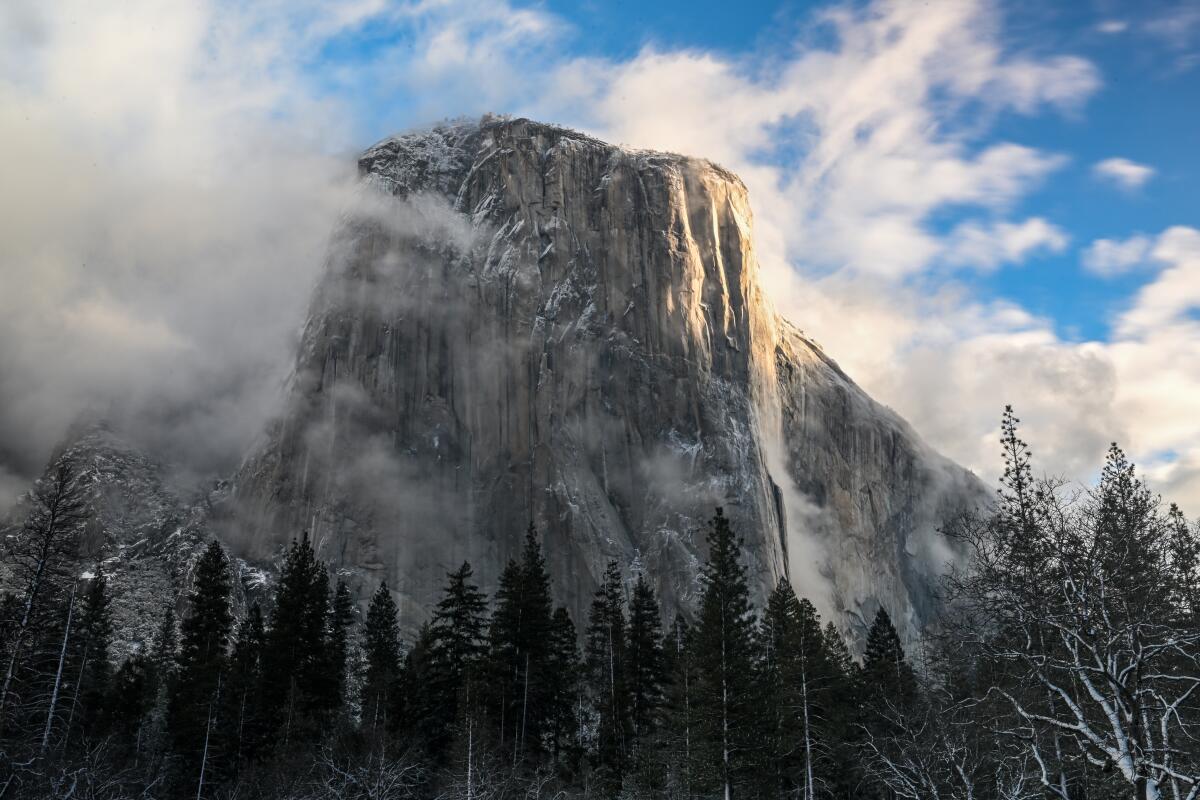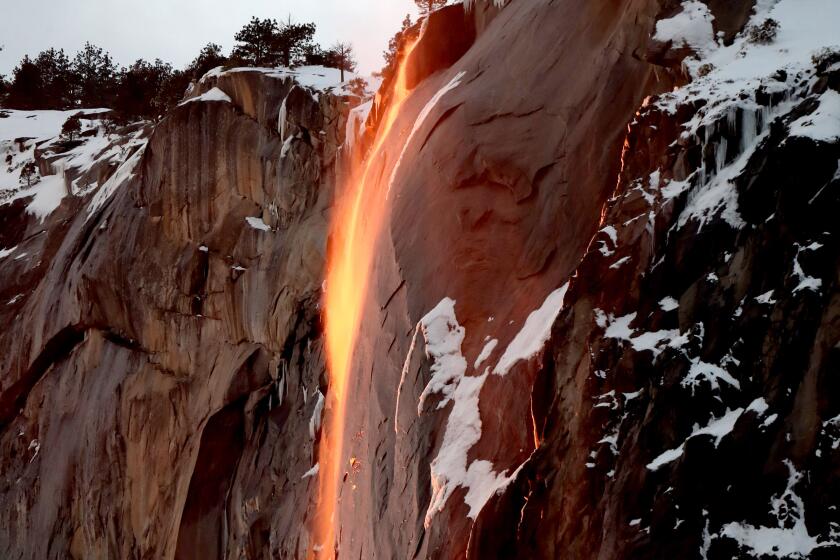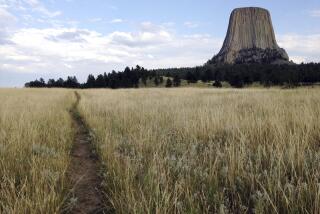‘It was mad’: Large rock falls from Yosemite’s El Capitan; visitor captures video

- Share via
Alex J. Wood was in the Yosemite Valley on Monday morning taking photos of El Capitan’s picturesque rock face when he heard what sounded like the “loudest thunder ever.”
He immediately looked up and saw a huge rock falling down the famous granite slab.
“I couldn’t believe what I saw,” Wood said, who happened to be taking photos at the time and captured the final portion of the rock’s fall on video. “It looked like a giant oversized grand piano falling in slow motion. … It was mad.
“Because I was already pointing [my camera] at El Capitan, I managed to film it,” said Wood, a sculpture artist visiting California from London.
He watched as huge dust plumes rose up from where the rock hit the ground.
- Share via
No one was injured in the incident at Yosemite National Park, and a visitor was on hand to capture the moment.
Wood was far enough from the rockfall that he said he wasn’t worried about his safety. He was concerned, however, about climbers he’d seen on the side of El Capitan and possible hikers nearby.
But park officials later said no one was injured.
“Nobody was hurt, and there was no damage,” said Ranger Scott Gediman, a spokesperson for Yosemite National Park.
After the incident, Gediman said the park closed Northside Drive — the road closest to where the rock fell — for more than 24 hours while geologists assessed the damage and monitored for other potential debris or rockfalls.
The initial rock fell from the eastern face of El Capitan, not far from Horsetail Fall — the site of Yosemite’s famous firefall. The phenomenon occurs when the setting sun hits the El Capitan waterfall in such a way that it looks like lava flowing down the rock face. Peak time for firefall is late February, often drawing throngs of visitors and photographers, but Gediman said Monday’s rockfall didn’t affect that popular tourist event.
Wood said he remained in the park until sunset Monday and was able to capture the phenomenon, just hours after he recorded the rockfall.
Gediman said a “few more boulders” did come down the sheer peak Monday evening, though geologists determined they probably had come loose during the initial fall.
The phenomenon at Horsetail Fall on El Capitan occurs in a tiny window in late February when the setting sun hits the waterfall at the right angle.
The park’s one-way road reopened Tuesday evening.
“Rockfalls are a common occurrence; they’re natural,” Gediman said. “There are rockfalls every day. Some are heard, some are not.”
He said the initial rock that fell was an estimated 1,000 to 2,000 cubic yards in size — significantly smaller than a massive boulder that fell in 2017, the most recent rockfall activity on El Capitan until Monday. Gediman didn’t have an estimated weight for the rock that fell Monday.
The park reported rockfalls on back-to-back days in September 2017, , the first of which killed a visitor and injured another, while the latter injured at least one. The deadly rockfall was a sheet of granite estimated to be the height of a 13-story building — about 130 feet long, 65 feet wide and in some sections 10 feet thick — while the rock that fell the following day was estimated to be about 10 times larger, officials said.
Gediman said Monday’s rockfall paled in comparison, though it still caused significant noise and disruptions — but, luckily, no injuries.
More to Read
Sign up for Essential California
The most important California stories and recommendations in your inbox every morning.
You may occasionally receive promotional content from the Los Angeles Times.













